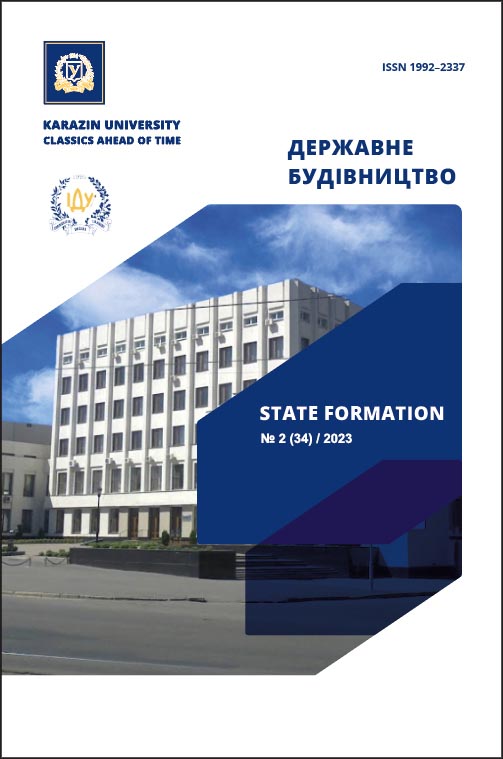Modern Mechanisms used by the EU to Combat Hybrid Threats
Abstract
In today's world, there is a trend towards a significant increase in the number of hybrid conflicts, which are becoming more and more sophisticated and unpredictable.
The article is devoted to the analysis of practical mechanisms for countering hybrid threats, including from state authorities, in particular, in the EU countries.
The modern practice of hybrid operations on the part of the aggressor demonstrates a radical change in the tactics and means used by a state-player of the world level against an adversary that is weak and unable to protect the integrity of its own territory
Downloads
References
Joint Framework on countering hybrid threats and the European Union response, European Commission, Brussels, April 6, 2016, https://eur-lex.europa.eu.
The Cell achieved full operational capacity in mid-2017.
E. Kaca, Possibilities of introducing EU sanctions for disinformation campaigns, "PISM Bulletin", No. 104 (2302), May 26, 2021, www.pism.pl.
A.M. Dyner, Border crisis as an example of hybrid actions, "PISM Strategic File", No. 2, February 2022, www.pism.pl.
F. Bryjka, A. Legucka, Disinformation and propaganda of Russia and Belarus in the context of the Polish-Belarusian border crisis, "PISM Bulletin", No. 212 (2410), December 9, 2021, www.pism.pl.
European Council conclusions of 21 and 22 October 2021, www.consilium.europa.eu/media/52622/20211022-euco-conclusions-en.pdf.
A. Legucka, M. Przychodniak, Disinformation of China and Russia during the COVID-19 pandemic, "PISM Bulletin", No. 86 (2018), April 21, 2020, www.pism.pl.
Hacking democracies Cataloging cyber-enabled attacks on elections, Australian Strategic Policy Institute, www.aspi.org.au.
2021 StratCom activity report - Strategic Communication Task Forces and Information Analysis Division, March 24, 2022, www.eeas.europa.eu.
A. Kozioł, Strategic Compass: towards an EU concept of space security and defense, "PISM Policy Paper", No. 1, January 2022, www.pism.pl.
P. Szymański, NATO and the European Union towards hybrid threats, "OSW Comments", No. 328, April 24, 2020, www.osw.waw.pl.
The EU's Cybersecurity Strategy for the Digital Decade, December 16, 2020, https://digital-strategy.ec.europa.eu.
CHSTs are NATO's instrument for responding to hybrid threats below the Art. 5 of the North Atlantic Treaty, which concerns collective defense. So far, CHST has been used twice: in 2019 in Montenegro (due to cyberattacks and disinformation during the election period) and in 2021 in Lithuania (due to the migration crisis on the border with Belarus).
NATO's response to hybrid threats, March 16, 2021, www.nato.int.
See Resolution on the mutual defense clause (Article 42(7) TEU), 2015/3034(RSP), 21 January 2016, https://oeil.secure.europarl.europa.eu.
In 2015, EU countries agreed to support counter-terrorist operations in Syria, Iraq and the Sahel

